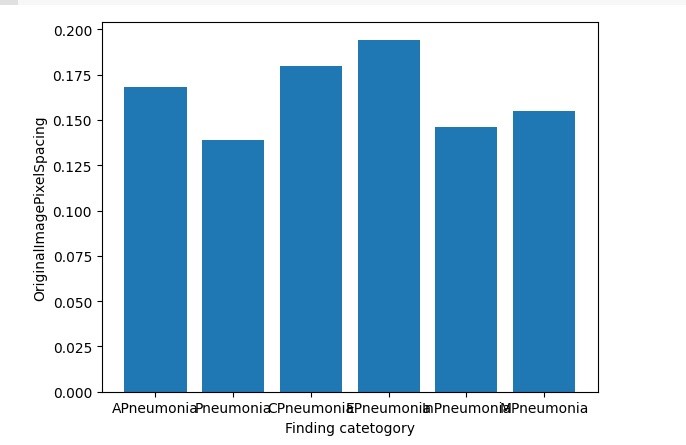A Hybrid Approach using CNN and DQN Technique for Diagnosis Pneumonia in Chest X-Ray Images
Main Article Content
Abstract
Pneumonia poses a significant risk to life and well-being respiratory infection that requires accurate and timely diagnosis for effective treatment. In this research investigation, it proposes a hybrid approach for detecting pneumonia diagnosis in chest X-ray images by combining machine learning techniques with convolutional neural networks (CNN), and deep Q-network (DQN) reinforcement learning. The suggested approach holds promising prospects for enhancing the efficacy of pneumonia diagnosis. Especially in resource-limited settings where access to radiologists or specialized equipment is limited. The proposed hybrid approach involves multiple stages. Initially, an extensive collection dataset of chest X-ray images, comprising both normal and pneumonia cases, is collected. The CNN model can be integrated into clinical decision support systems to provide accurate diagnosis of infection for pneumonia. Furthermore, the use of the rainbow method can be extended to other clinical imaging tasks to enhance deep learning models performance Additionally, it demonstrates that the use of the rainbow method improves the performance of the CNN, leading to a higher accuracy. We have introduced a novel hybrid deep learning framework called LIP-CDF Algorithm, which combines algorithms of Convolutional Neural Networks (CNN) and Deep Q-Network (DQN) techniques. LIP-CDF (Lung Infection Prediction using CNN-DQN Fusion) Algorithm is a computational approach designed for the accurate and efficient lung infection prediction using images from chest X-rays. The implementation of this framework utilized popular tools such as Jupyter Notebook, TensorFlow, and Keras. To assess the effectiveness of our model, the NIH chest X-beam picture dataset gained from the Kaggle archive. To evaluate the effectiveness of our proposed approach, we conduct experiments on the publicly available Chest X-ray14 dataset. The results show that our approach achieves a high accuracy of 94.8% in detecting pneumonia cases.
The purpose of our framework is to streamline the detection of lung diseases, making it easier for both medical experts and doctors. By harnessing the power of CNN and DQN, our approach offers a simplified yet accurate method for identifying lung diseases from chest X-ray images. This advancement in deep learning technology has the potential to greatly assist healthcare professionals in diagnosing and treating patients effectively
Article Details
References
"Pneumonia Essentials", Burke A. Cunha, Publisher: Physicians' Press,Year: 2019.
K. He et al., "Deep Residual Learning for Image Recognition," Proceedings of the IEEE Conference on Computer Vision and Pattern Recognition (CVPR), 2016.
J. Shotton et al., "TextonBoost: Joint Appearance, Shape and Context Modeling for Multi-Class Object Recognition and Segmentation," Proceedings of the 11th European Conference on Computer Vision (ECCV), 2010.
"Artificial Intelligence: A Modern Approach", Stuart Russell and Peter Norvig, 2016.
Learning representations by back-propagating errors",Authors: David E. Rumelhart, Geoffrey E. Hinton, Ronald J. Williams,Year: 1986.
Mnih, V., Kavukcuoglu, K., Silver, D., Rusu, A. A., Veness, J., Bellemare, M. G.,& Petersen, S. (2015). Human-level control through deep reinforcement learning. Nature, 518(7540), 529-533.
Watkins, C. J. C. H., & Dayan, P. (1992). Q-learning. Machine Learning, 8(3-4), 279-292.
Kundu, R., Das, R., Geem, Z. W., Han, G.-T., & Sarkar, R. (2021). Pneumonia detection in chest X-ray images using an ensemble of deep learning models. Published: September 7, 2021.
Rajaraman, S., Candemir, S., Kim, I., Thoma, G. R., & Antani, S. K. (2018).Visualizing abnormalities in chest radiographs through salient network activations in Deep Learning. In Medical Imaging 2018: Computer-Aided Diagnosis (Vol. 10575, p. 105750W). International Society for Optics and Photonics.
Chouhan, V., Singh, S. K., V. H. C. (2020). A Novel Transfer Learning Based Approach for Pneumonia Detection in Chest X-ray Images. Applied Sciences, 10(2), 559.
Nooruldeen Mohammed Kareem, & Asma Thamir Ibraheem. (2023). Developing a Frame Design for Airport Pavements Maintenance Management System. International Journal of Intelligent Systems and Applications in Engineering, 11(4s), 498–508. Retrieved from https://ijisae.org/index.php/IJISAE/article/view/2718
Wang, X., Peng, Y., Lu, L., Lu, Z., Bagheri, M., & Summers, R. M. (2018). ChestX-ray8: Hospital-scale chest X-ray database and benchmarks on weakly-supervised classification and localization of common thorax diseases. In Proceedings of the IEEE conference on computer vision and pattern recognition (pp. 2097-2106).
Shan, Z., Yan, R., Wang, B., & Zhang, X. (2021). Pneumonia Detection via a Hybrid Deep Learning Model with Knowledge Integration. Journal of healthcare engineering, 2021, 1-15.
Karthikeyan, K., & Kumar, N. R. (2020). Deep learning based hybrid approach for pneumonia detection. Journal of Ambient Intelligence and Humanized Computing, 11(11), 4691-4699.
Jasmine sabeena, P Venakta Subba Reddy,” ENHANCED DEEP LEARNING FRAMEWORK TO PREDICT VARIATONS IN STOCK MARKETS”, JCR,( ISSN- 2394-5125,vol 7,issue 15,2020.
Rainbow: Combining Improvements in Deep Reinforcement Learning" by Matteo Hessel, Joseph Modayil, Hado van Hasselt, Tom Schaul, Georg Ostrovski, Will Dabney, Dan Horgan, Bilal Piot, Mohammad Azar, David Silver. (2018).
Sutton, R. S., & Barto, A. G. (2018). Reinforcement Learning: An Introduction. MIT Press.
Paul Garcia, Ian Martin, .Diego Rodríguez, Alejandro Perez, Juan Martinez. Optimizing Adaptive Learning Environments using Machine Learning. Kuwait Journal of Machine Learning, 2(2). Retrieved from http://kuwaitjournals.com/index.php/kjml/article/view/178
Abadi, M., Barham, P., Chen, J., Chen, Z., Davis, A., Dean, J., ... & Zheng, X. (2016). TensorFlow: A System for Large-Scale Machine Learning. In 12th USENIX Symposium on Operating Systems Design and Implementation (OSDI 16) (pp. 265-283).
Arslan, F. B., Yildirim, O., & Ceylan, R. (2019). A hybrid deep learning and rule-based approach for detection of pneumonia from chest X-ray images. In 2019 27th Signal Processing and Communications Applications Conference (SIU) (pp. 1-4). IEEE.
Rajpurkar, P., Irvin, J., Zhu, K., Yang, B., Mehta, H., Duan, T.& Langlotz, C. P. (2018). CheXNet: Radiologist-Level Pneumonia Detection on Chest X-Rays with Deep Learning.
Kumar, N.C., Basit, A., Singh, P., Venkaiah, V.C. (2017), “Document Details-Proactive secret sharing for Long MANETS Elliptic CURVE Cryptography”. IEEE, Conference, 24 May 2018, Pages 312-316.
Kumar, N.C., Basit, A., Singh, P., Venkaiah, V.C, “Lightweight cryptography for distributed PKI based MANETS”, Volume 10, Issue 2, 1 March 2018, Pages 69-83.
“Multi-stage multi-secret sharing scheme for hierarchical access structure”, Basit, A., Kumar, N.C., Venkaiah, V.C., Moiz, S.A., Tentu, A.N., Naik, W. IEEE International Conference on Computing, Communication and Automation, ICCCA 2017,Volume 2017-January, 19 December 2017, Pages 557-563.

